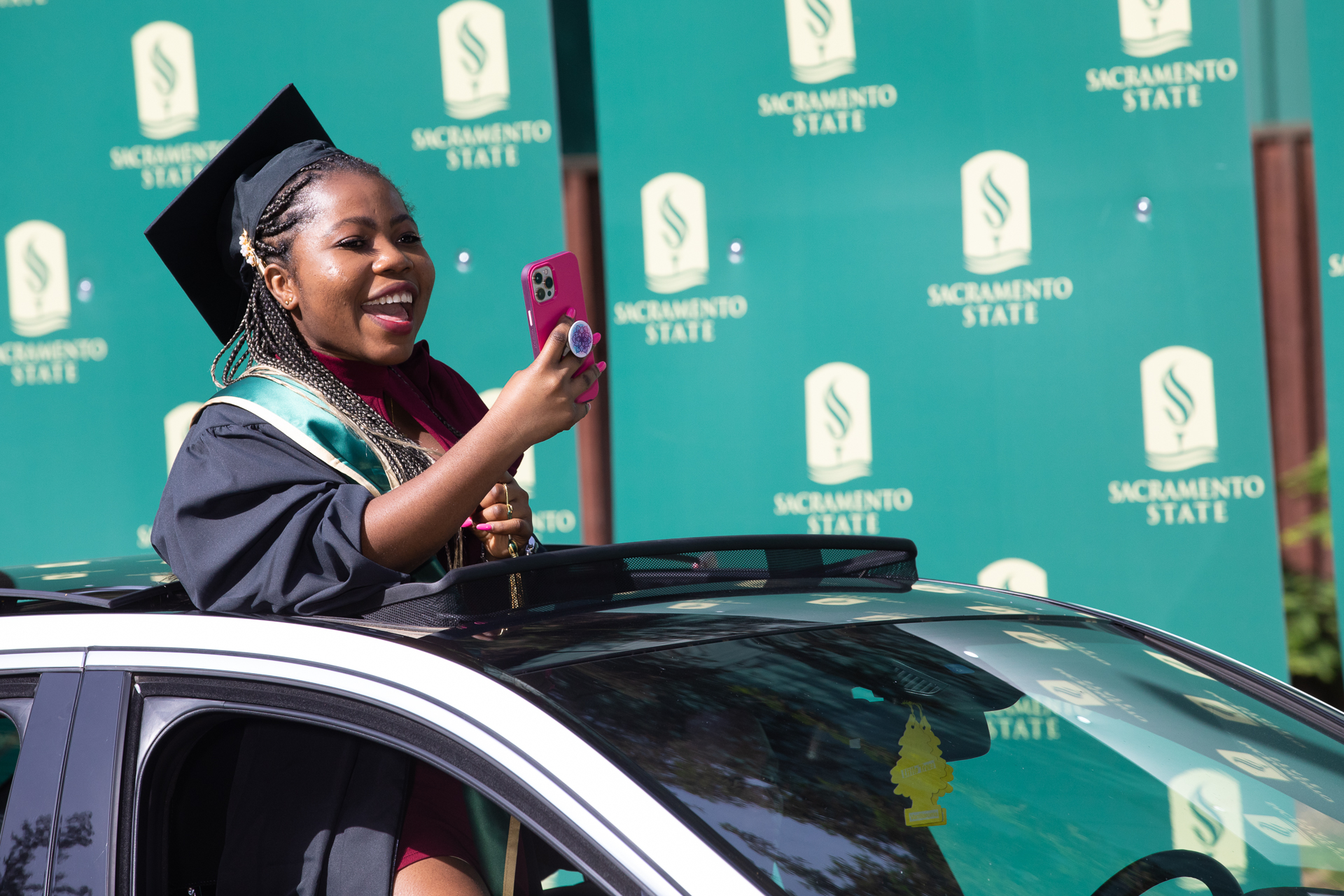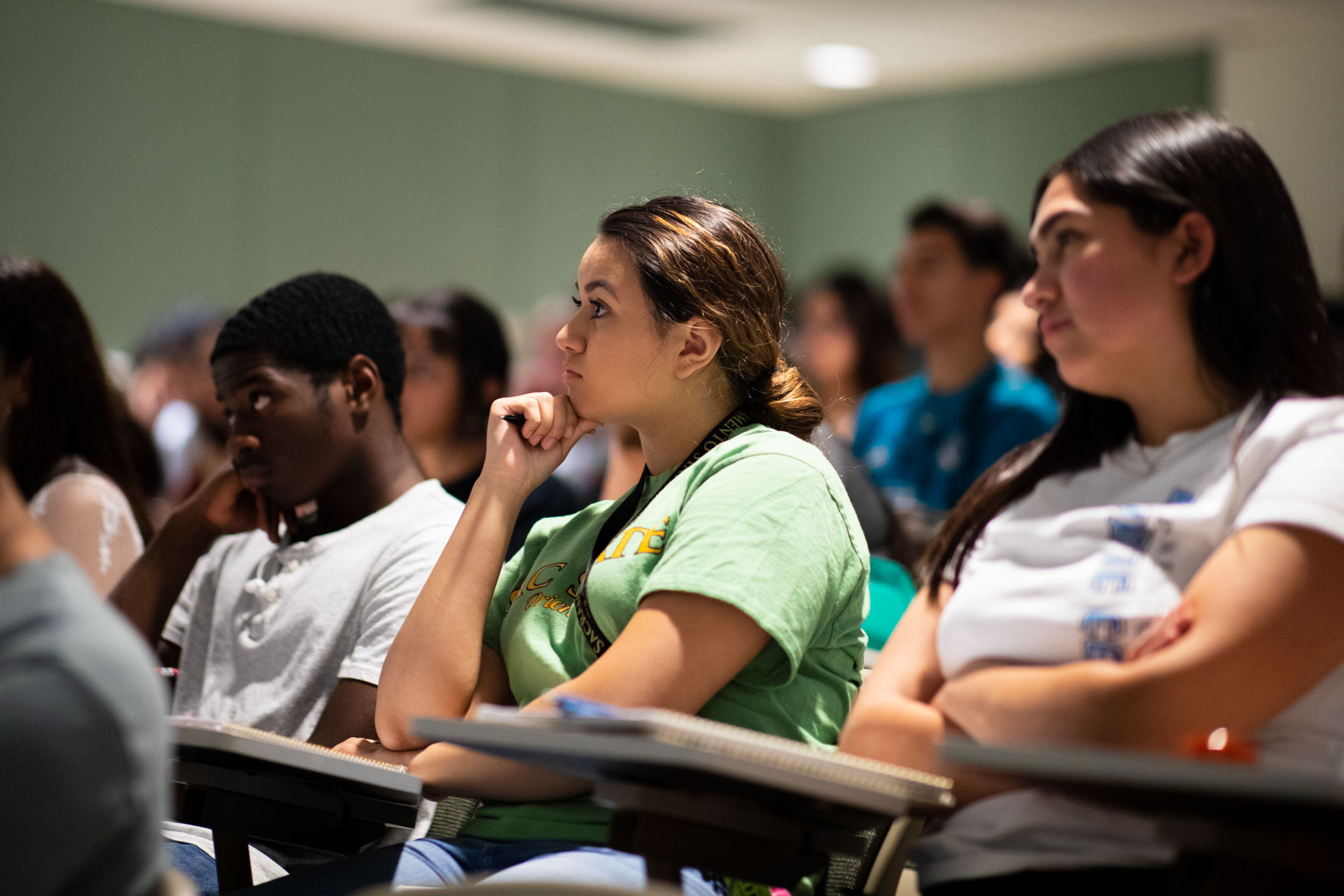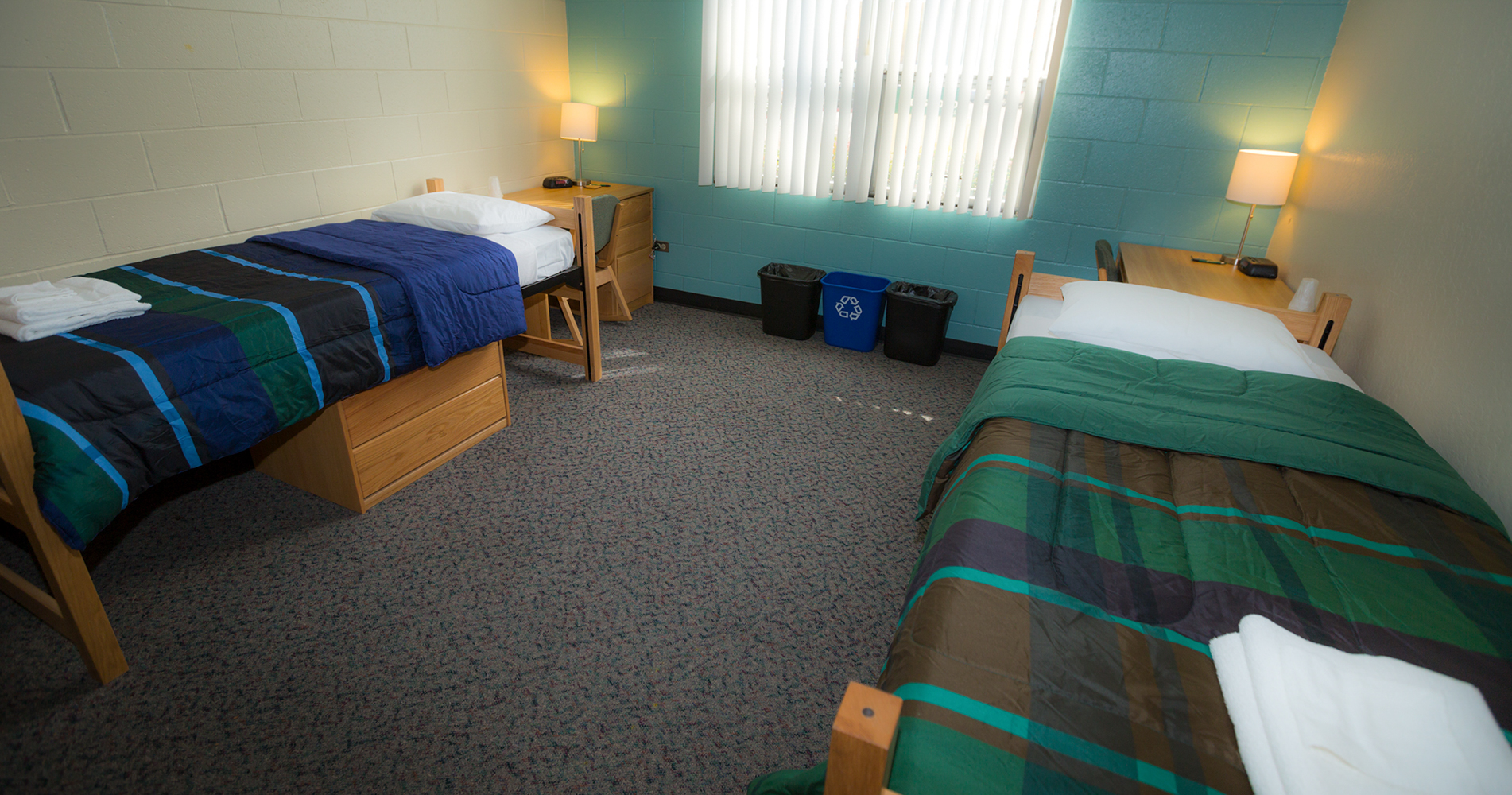Story Content
As Sac State grad rates continue to rise, 'equity gap' between student groups narrows

July 16, 2021
Sacramento State is making significant strides toward closing its “equity gap” affecting students of color, new data show.
The University has implemented policies and practices in recent years designed to boost graduation rates for all scholars and close the gaps that have long existed between traditionally underrepresented students and others.
Since 2016, when Sac State launched its “Finish in Four” and “Through in Two” campaigns as part of the CSU’s Graduation Initiative 2025 campaign, the University has seen a steady increase in the number of students of all backgrounds obtaining their degrees in a timely manner.

Projections for 2021 suggest that the trend is continuing, despite disruptions caused by the COVID-19 pandemic.
For more than a year, most Sac State students have taken their courses online in an effort to curb spread of the virus. The pivot has been difficult for many students, some of whom had to study in cramped quarters with inadequate equipment and spotty internet.
Nevertheless, they persevered. Sac State projects that 26.1% of 2021 graduates will complete their degrees in four years, up from 8.8% in 2016. The two-year graduation rate for transfer students, which was 27% in 2016, now stands at 45%.
The University has seen improvements across the board, said James Dragna, executive director of University Initiatives and Student Success.
Perhaps most notably, the equity gap between traditionally underserved minority students and others is narrowing, according to statistics from Dragna’s office. The gap shrunk from a high of nearly 12% two years ago to a projected 4.3% this year, the data show.
“We are encouraged by the increasing percentage of students who are graduating in four years, and even more encouraged by the shrinking equity gaps,” President Robert S. Nelsen said. “We must never lose focus of our goal to help every student graduate in a timely manner.”
Sac State students have made the strides thanks to efforts to create a culture that helps scholars from all backgrounds, Dragna said. Those endeavors include streamlining enrollment and making classrooms more inclusive and welcoming.
“We are working to create an equitable environment that works for everyone, which helps students move forward who in the past have been faced significant obstacles,” he said.
CSU Chancellor Joseph I. Castro has cited educational equity as one of his top priorities.
“I want to meet those bold Graduation Initiative 2025 goals, and accelerate the elimination of the equity gaps,” he said in a livestream interview in March with the Public Policy Institute of California. “That’s a real priority for me.”
Improving faculty diversity and “developing an environment of belonging and mattering in the classroom” are keys to closing the gaps, said Dragna. Sac State has been moving toward its goals by examining its hiring and retention practices, conducting antiracism training, and helping students succeed in a virtual learning environment, he said.
The University is on track to achieve or surpass most of the CSU’s 2025 graduation goals, Dragna said.
Story continues after video
2020, 2021 grads enjoy unique 'CARmencement'
“We are working to create an equitable environment that works for everyone, which helps students move forward who in the past have been faced significant obstacles.” - James Dragna, executive director of University Initiatives and Student Success
As part of the system’s initiative, Sac State and each of the other 22 CSU campuses have added thousands of high-demand courses that are necessary for graduation, eliminating remedial courses that do not earn credits. In addition, Sac State automatically enrolls freshmen in courses totaling 15 credit hours, placing them on a path toward timely graduation. The University also has expanded grants and other incentives to allow more students to take summer session classes.
“As a result of those and other activities, we now have the highest percentage of students taking summer courses in our history,” Dragna said. Thanks to those summer sessions, many more students have been able to stay on course toward earning their degrees and launching their careers.
The University’s recent gains in graduation rates are among the best in the CSU, and “quite possibly in the country,” Dragna said.
“We came together and achieved something that many thought would be impossible,” he said. “It is a collaborative effort involving so many people, but most importantly the individual students who, when given the opportunity, have found a way to succeed.”
Not every student wants or needs to graduate in four years, Nelsen pointed out.
“Different people take different pathways toward earning their degrees,” he said. “But the University should not be the reason a student cannot ‘finish in four.’ We need to provide pathways to graduation, not roadblocks.”
Media Resources
Faculty/Staff Resources
Looking for a Faculty Expert?
Contact University Communications
(916) 217-8366
communications@csus.edu


